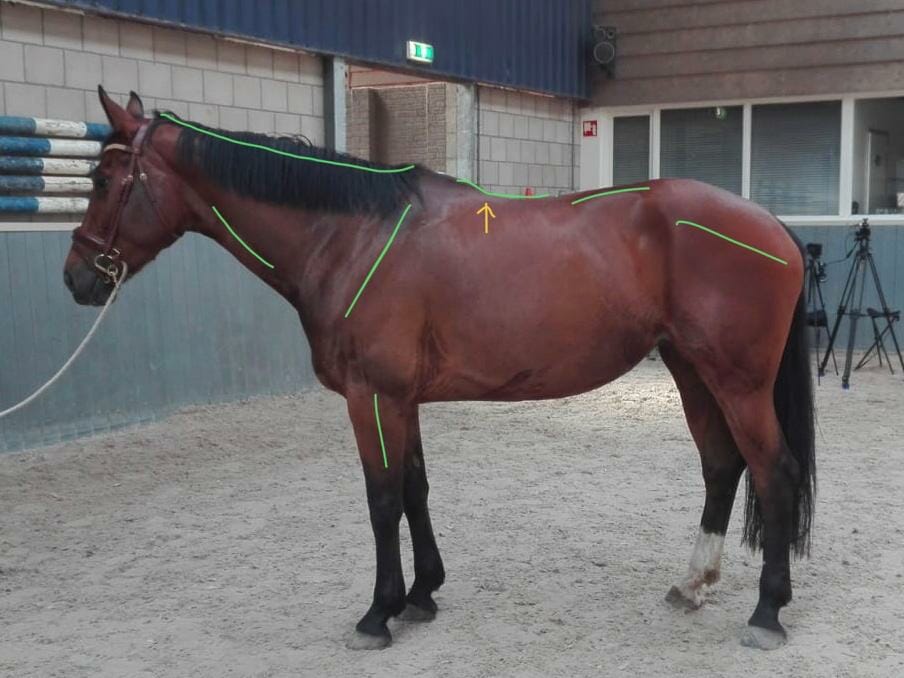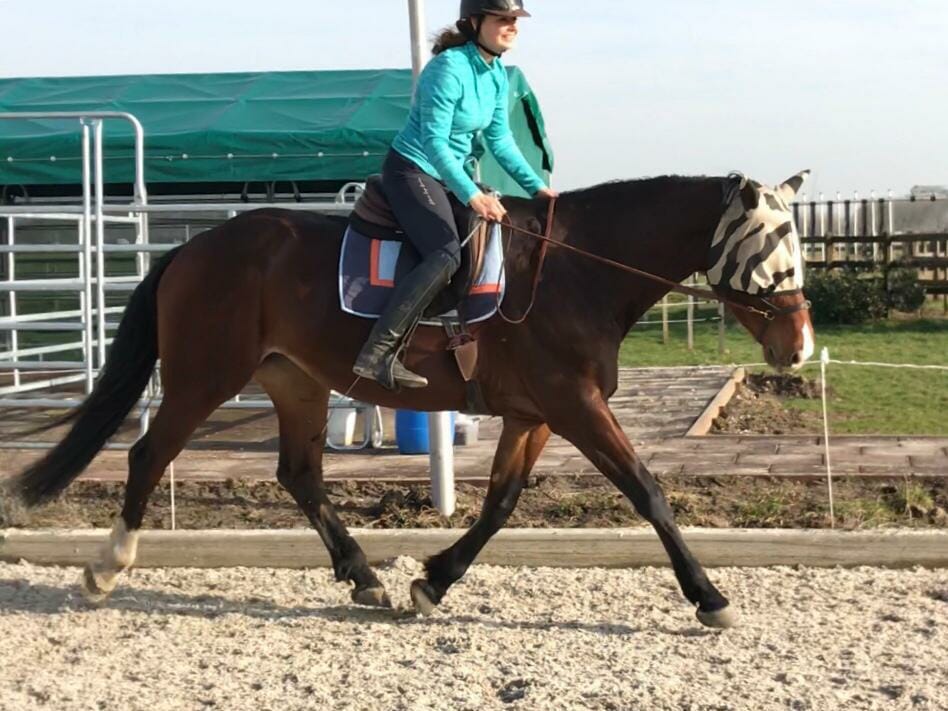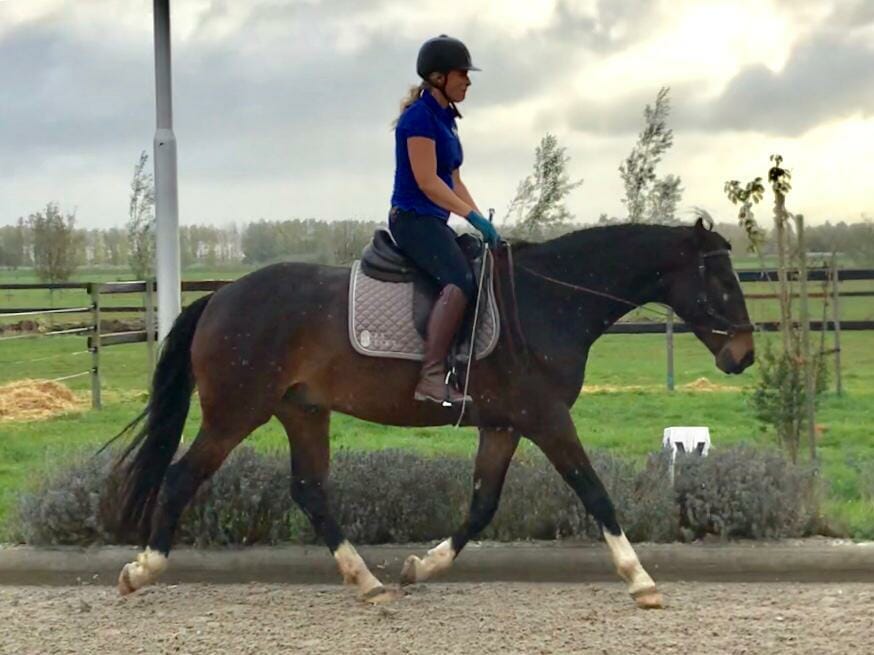INTRODUCING SADA SHIVA
This horse is called Sada Shiva. She is an 8-year-old Dutch Warmblood mare. In 2018 she was adopted by Equitopia Center, 4DimensionDressage and Debbie van der Aar.
She is living proof of what happens when we train a horse short in the neck for a number of years. Sada was trained low deep and round (LDR) for four years. This means her nose was behind the vertical and close to her chest. Recent studies show that training LDR increases the development of the musculature in the underline of the neck. When she first came to us, this was very obvious in Sada Shiva.
If we train with the neck short (as we do with LDR or even just slightly behind the vertical) it has a big impact on the posture of the horse. This doesn’t only apply to the time spent training. After a while the body of the horse starts to adapt and will stay in this posture even standing in the stable or in the pasture.
This is because fascia, a type of connective tissue we can find everywhere in the body, tightens to adapt to the LDR posture and this tightness in the fascia will keep the neck short, preventing it from lengthening. With the neck short, the withers will sink between the shoulder blades. The back will hollow in the thoracic area and overflex in the lumbar area. The shoulder movement will become restricted, the angle between the shoulder blade and the ground becomes too steep and the pelvis will tilt in the wrong direction. The fascia then becomes overloaded with holding this incorrect posture, the tissue becomes tense and tight, which means the horse becomes painful all over his body. The constant pain and tension are very stressful, so the horse will often become spooky and overreactive to stimuli. These are all symptoms of topline syndrome. Take a look at the picture below of Sada Shiva, taken in June 2018, weeks after she was brought to the rehab facility. In addition to all this, Sada Shiva also showed a lameness in her hind left due to fascial restrictions in the lumbar area, pelvis and around her stifle and hock.

We did a lot of different types of bodywork on this horse, a lot of releasing the tight fascia. Fascia has a tendency to store emotional trauma and stress, so by releasing fascia we were also releasing stress and negative emotions. Sada had to get used to being in a herd, which was hard in the beginning, but now she has friends. We rebalanced her feet, found a saddle that fits and allows the withers and the back to lift. After releasing the tension in her body, we started training her in hand. It took two months before she was ready to work under saddle. We trained her in a forward, down and out posture with length in the neck. This means the distance from the nose to the chest is long! In a forward down and out posture, the nose is in front of the vertical, the neck has the shape of an arch and the withers and back are lifting.
INTRODUCING DEBBIE
But above all, we found a perfect match for her – Debbie van der Aar. This very gifted young lady has a special connection with Sada. She is one of my students and the one and only trainer for this horse. Sada is so sensitive that we decided she needs only one rider. Debbie did an amazing job with this (in the beginning very explosive) mare. She straightened and balanced her, so she could lengthen her neck again to unwind her spine and her fascia. The photo below was taken in February 2019. There is still a lot of work to be done, but the difference speaks for itself. LDR causes topline syndrome and is always bad for the horse. If we want to rehabilitate a horse with topline syndrome, we need to train him with length in the neck in a forward down and out posture, which comes from balance, core-stability and correct energy. If you have a horse with topline syndrome, rest assured that there are ways to change it and find the way back to health and harmony! Keep in mind that the sooner you detect topline syndrome, the less time it takes to unwind your horse.

If you liked this post, you might also like these:
Compassionate Training for Today’s Sport Horse (Online Course)
Compassionate Training for Today’s Sport Horse (Book)
The story of Sada Shiva’s progress (members-only)



